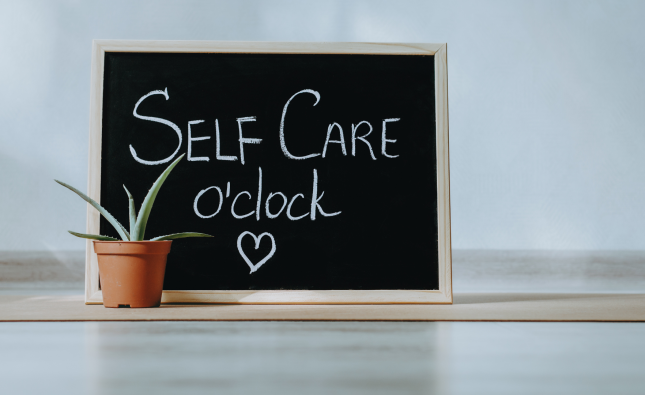
Are you tired of feeling sluggish and unmotivated? Do you want to take control of your health and transform your body into a powerhouse machine? Look no further! In this post, we’re going to equip you with the knowledge and tools necessary to slay the fitness game. We’ll be focusing on the importance of nutrition and how it can make or break your journey towards optimal health. Whether you’re a seasoned athlete or just starting out, these tips will help power up your workouts, boost your energy levels, and improve overall well-being. So buckle up – it’s time to take charge of your life!
What is fitness?
Fitness is often misunderstood as simply meaning “physical fitness,” but it is so much more than that. Fitness is a state of being that includes physical, mental, and emotional well-being. To be truly fit, you must pay attention to all three aspects of your health.
Physical fitness is, of course, important for overall health. It helps to reduce the risk of chronic diseases, such as heart disease, stroke, and diabetes. It also helps keep bones and muscles strong and can improve your balance and coordination. Regular physical activity can help you maintain a healthy weight, improve your mental health and mood, get a good night’s sleep, and reduce stress levels.
Mental fitness is just as important as physical fitness. It includes things like having a positive outlook on life, being able to manage stress effectively, maintaining good communication skills, and having satisfying relationships. Mental fitness can help you cope with difficult situations in life and make better decisions about your health.
Emotional fitness refers to how well you deal with the ups and downs of life. It involves managing your emotions in a healthy way, setting boundaries in relationships, asking for help when you need it, and taking care of yourself emotionally. Like physical and mental fitness, emotional fitness can help improve your overall health and well-being.
The different types of fitness
There are many different types of fitness, and each has its own benefits. Here are some of the most popular types of fitness:
Aerobic exercise is great for your heart and lungs, and can help to reduce your risk of cardiovascular disease.
Resistance training helps to build strong muscles, bones and connective tissue, and can improve your posture and balance.
Flexibility training helps to keep your joints and muscles healthy, and can prevent injuries.
Balance training helps to improve your coordination and balance, and can prevent falls.
The benefits of being fit
When it comes to being fit and healthy, there are countless benefits to be gained from regular exercise and eating a nutritious diet. For one, you’ll have more energy to get through your day-to-day tasks. You’ll also reduce your risk of developing chronic diseases like heart disease, stroke, and type 2 diabetes. Plus, being fit can help improve your mental health and mood, and even help you live longer.
The best ways to get fit
There’s no “one size fits all” when it comes to fitness and nutrition, but there are some general guidelines that can help you make healthier choices. Here are a few tips to get you started:
1. Make sure you’re getting enough protein. Protein is essential for building and maintaining muscle, so if your goal is to get fit, make sure you’re including plenty of lean protein in your diet. Good sources of protein include chicken, fish, tofu, legumes, and eggs.
2. Eat plenty of fruits and vegetables. Fruits and vegetables are packed with vitamins, minerals, and antioxidants that are essential for good health.Aim to fill half your plate with fruits and vegetables at every meal.
3. Limit processed foods and added sugars. Processed foods are often high in unhealthy fats, sodium, and added sugars. They can also be low in important nutrients like fiber and protein. To make sure you’re getting the most nutrition from your food, choose whole foods instead of processed options as much as possible.
4. Drink plenty of water. Staying hydrated is important for good health, energy levels, and exercise performance. Aim to drink eight glasses of water per day or more if you’re active or live in a hot climate.
5 . Get moving! Exercise is important for overall health and fitness levels. A mix of cardio (like walking or running) and
Fitness myths debunked
1. There’s no such thing as spot-reducing fat. You can’t choose to lose weight from just your stomach, or your thighs, or your arms. When you lose weight, it happens evenly all over your body.
2. You don’t have to eat less to lose weight. In fact, eating more often can actually help boost your metabolism and help you shed unwanted pounds.
3. You don’t have to give up carbs to lose weight. While cutting back on carbs can help you lose weight quickly, you don’t have to eliminate them entirely from your diet. Just be sure to choose healthy carbs like fruits, vegetables, and whole grains.
4. You don’t have to kill yourself at the gym to see results. A moderate amount of exercise is all you need to start seeing results. And as you continue working out, you can gradually increase the intensity and duration of your workouts.
5. You don’t have to wait until you’re “in shape” to start seeing results. Even if you’re starting from scratch, you can still see results relatively quickly by following a healthy diet and regular exercise routine
How to make fitness a part of your life
If you’re like most people, you know that you should be exercising and eating healthy, but somehow these good intentions always seem to fall by the wayside. If you’re struggling to make fitness a part of your life, here are some tips that can help:
1. Set realistic goals. Don’t try to do too much too soon or you’ll quickly become overwhelmed and discouraged. Start with small, achievable goals and build from there.
2. Find an activity that you enjoy. If you hate running, don’t force yourself to do it just because it’s “good for you.” Find an activity that you can look forward to and that doesn’t feel like a chore.
3. Make time for it. You’re not going to find time for fitness if you’re always putting other things first. Schedule your workouts into your week like you would any other important appointment and stick to it.
4. Get a partner. Having someone to exercise with can make it more fun and motivating. Plus, it’s harder to bail on a workout when someone is counting on you.
5. Keep a journal. Tracking your progress can be a great motivator. Write down what you did each day and how you felt afterwards. Over time, you’ll be able to see just how far you’ve come.
Conclusion
Slaying the fitness game is all about having a holistic approach to your health and well-being. The key to success lies in understanding the importance of nutrition, exercise, and rest. Eating healthy foods that nourish your body while exercising regularly are necessary for maintaining a strong foundation of physical fitness. Additionally, taking time to relax and unwind will help ensure you’re able to perform at your peak levels both in and out of the gym. With these tips by your side, you’ll be sure to increase your confidence with every workout. Good luck!










